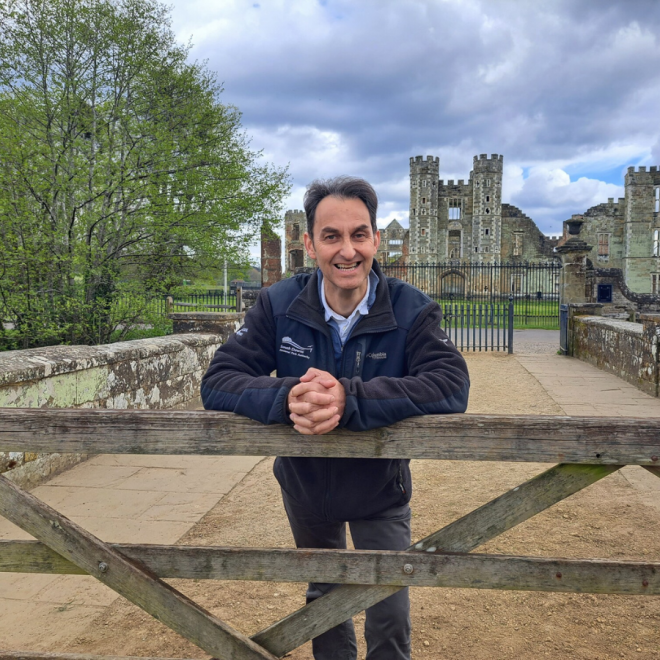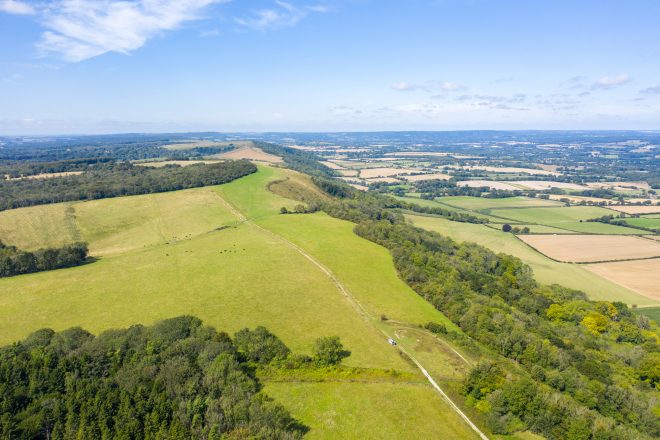“Good planning has three pillars for balance” – thought leadership
April 24, 2025

By Tim Slaney, Director of Planning at South Downs National Park Authority
Core and Balance. No, I’m not talking about pilates or yoga. Rather, these two words could be used to sum up sound planning, especially at a time of such change. Whether it’s the global geopolitics, our own economic challenges as we seek to deliver the Government’s missions, or devolution, local government reorganisation and planning reforms, change is definitely all around us.
But, to avoid falling down amidst all these potential hurdles, it’s useful to know what your core purpose is. So what might that be for planning in a National Park? To my mind, it’s about delivering appropriate growth in a protected landscape, in a sustainable way that respects its evolving heritage. Running alongside this purpose and of equal value, we must ensure we recover as much nature as possible – and nature in its widest sense…flora, fauna, clean air, dark skies, and, perhaps most topically given all the recent headlines, healthy and plentiful rivers and streams. The latter are particularly important in the South Downs National Park as we’re one of the few places on the planet with beautiful chalk streams with their own specialist ecosystems. And, last but by no means least, our purpose is to enable as many people as possible to visit and enjoy these wonderful places we are lucky enough to work or live in.
If you have a clear mandate to do this, such that you can plan your work and resources around this, then despite change, you can plot a course. That is what we are seeking to do with our Local Plan Review, the revised Biodiversity Net Gain Technical Advice Note (TAN), as well as the benefits we obtain via policy and negotiation on each application where there may be negative impacts upon the purposes of the National Park. Ultimately, it all comes down to ‘place’ and we strive to enhance and restore nature via good development befitting of its local area.
Others may have different views, but if we do have this as core, then our policies – and as important our logic and explanations for all – will be clearer. Focus on the planning system is arguably higher than ever, with planning in the news almost daily and rhetoric about whether we’re a blocker or a builder. Therefore, being able to explain what we do, and why, is absolutely vital.
In this day and age, we need compelling stories to tell in multiple ways, from 30 second soundbites, to videos, to publications such as this. For this reason, I’m really pleased that our video on the Local Plan Review has had over 2,500 hits on YouTube and our website stories have garnered over 6,000 views.
Is one a blocker or a builder, pro or anti, is where balance comes into play. Good planning is not about such basic, often polemic, viewpoints uninformed by the nuances and reality of the situation. I believe good planning has three pillars for balance – evidence base, community views whatever they may be and a degree of leadership. These are the fundamentals that sit behind decision-making. The recent debates about growth on the one hand and environmental conscience can be so harmful. I remain hopeful we can achieve the win-win of nature restoration and growth, but it’s about balance.

While on this train of thought, I’m drawn to the recently published Government Land Use Framework. In a wonderful baseline chart, it shows the changes likely to be required across the country to meet environmental targets, food production and the growth agenda. Whilst so much focus goes on the 0.2% of predicted change on our land mass by development and built form, the big changes in agriculture, tree cover, floodland and land dedicated for nature, seem to get ignored. Again, it boils down to balance and proportion when considering land changing and for what purpose.
One other thought. Of course, people are passionate about ‘their’ area – quite rightly. It goes to the community view around policies and proposals. Yet as planners and environmentalists within a nationally-designated landscape we have to look at the wider picture too. That is in part what a “National Park”, as opposed to any other type of park, is all about. I would be the first to admit, however, that achieving that balance is not always easy when factoring in a national and local perspective. This contrast certainly keeps us on our toes as planners and is one of things that makes planning in a National Park challenging, yet so rewarding.
I’m now off to a Pilates class to re-balance my mind and make sure I don’t fall down! (we all need maintenance especially after decades of squash and tennis!) As we all shape, as far as we can, and adapt to, the forces of change, I’ll leave you with this final takeaway: Let’s remember our core purposes and the need for balance – they are needed now more than ever before.
